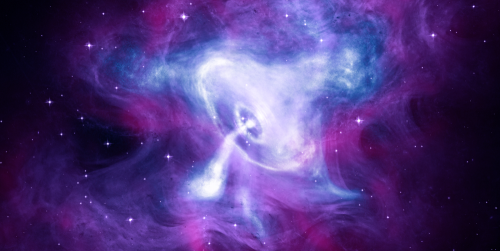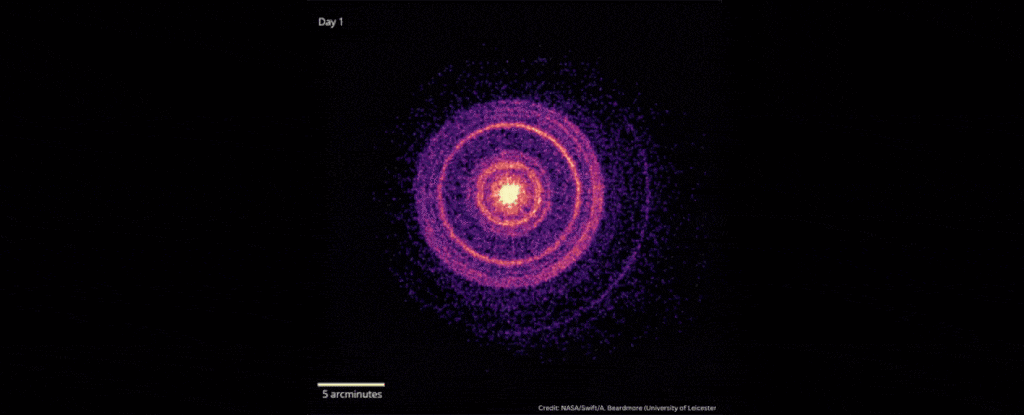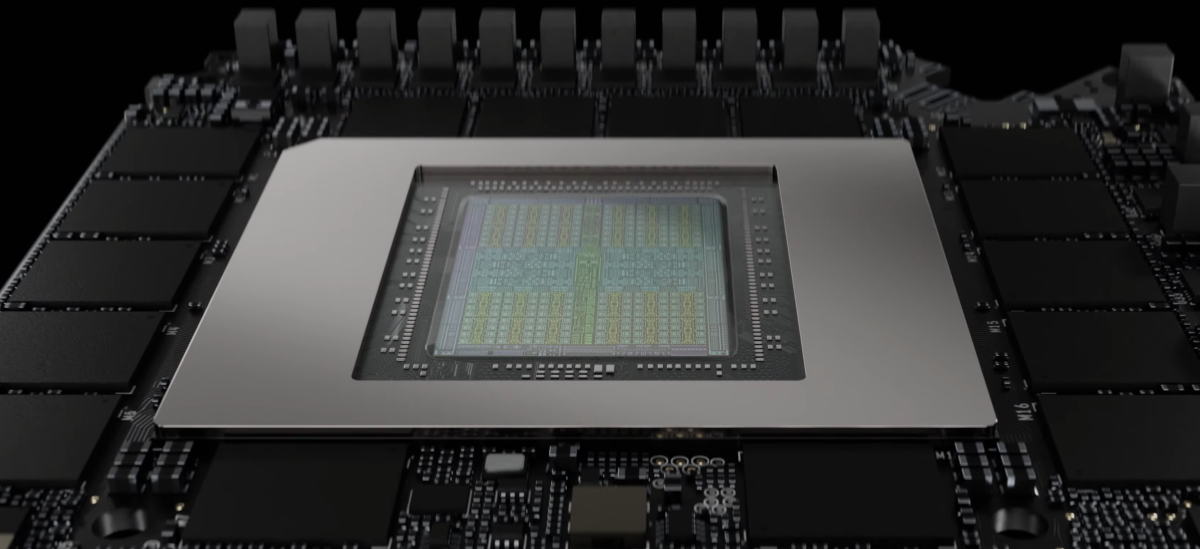Drilling into Neutron Stars with Computers – Physics

Studying neutron stars is tricky. The nearest one is about 400 light-years away, so sending a probe would likely take half a million years with current space-faring technology. Telescopes don’t reveal much detail from our vantage point, since neutron stars are only the size of a small city and thus appear as mere points in the sky. And no laboratory on Earth can reproduce the inside of neutron stars, because their density is too great, being several times that of atomic nuclei. That high density also poses a problem for theory, as the equations for neutron-star matter cannot be solved with standard computational techniques. But these difficulties have not stopped efforts to understand these mysterious objects. Using a combination of theory-based methods and computer simulations, Ryan Abbott from MIT and colleagues have obtained new, rigorous constraints for the properties of the interior of neutron stars [1]. Their results suggest a relatively high upper bound on the speed of sound inside these compact objects, which could mean that neutron stars can grow more massive than previously thought.A neutron star’s internal properties—such as pressure and density—are governed by the equations of quantum chromodynamics (QCD), which describes the strong force that acts on protons, neutrons, and their constituent quarks. So if the equations are known, why is it so difficult to solve them in the case of neutron stars? The problem stems from the fact that our go-to calculation tool is perturbation theory, in which we expand the equations in terms of a small parameter (allowing higher-order terms to be ignored). For neutron-star matter, perturbation theory is a viable strategy in certain regions: in the outer atmosphere and upper crust, where the density is relatively small [2], and in the core of the most massive neutron stars, where the QCD coupling parameter is small [3]. But in the bulk of neutron stars, where the density is between those two extremes, perturbation theory fails. (Researchers can interpolate between low and high densities, but the results are imprecise [4].)Fortunately, physicists have another tool at their disposal: lattice QCD. This numerical method treats quark and gluon interactions on a discretized space-time lattice, which makes QCD amenable to being simulated on a computer. At small densities, QCD can be solved directly with this method, but lattice QCD breaks down at the neutron star densities of interest. There is a clever way, however, to draw a box around this problem. It involves using isospin—a type of nuclear charge that treats protons as positive and neutrons as negative. Most nuclear matter has roughly equal numbers of protons and neutrons, so the isospin density is close to zero. But one can imagine a state of matter with large (or “nonzero”) isospin density, in which protons greatly outnumber neutrons. Prior work has shown that the pressure of nuclear matter—at any density—must be lower than the pressure of nuclear matter at nonzero isospin density [5, 6].Abbott and his colleagues have used this upper pressure limit to “drill” down into the high-density regions of a neutron star and recover rigorous results [1]. The team performed extensive numerical lattice QCD simulations for nonzero isospin density simultaneously on several of the most powerful supercomputers. Even with that much computing power, a direct solution for the equation of state for isospin nuclear matter was not possible, because lattice QCD assumes a discrete space-time, whereas the “real world” is continuous. To obtain systematically controlled results, the group performed a careful extrapolation of their computer simulations to the “continuum limit” of vanishingly small lattice spacing, which had never been done before for nonzero-isospin nuclear matter.With the nonzero-isospin computations at hand, Abbott and colleagues were able to obtain several new key results about the properties of extreme-density matter. First, they showed that nuclear matter at high isospin density is a type of superconducting material, and they determined its superconducting gap—a parameter that characterizes the potential energy of the system. For this gap calculation, they took the difference between their computed pressure and the known pressure for nonsuperconducting matter [4], arriving at a value that agrees with (but is more precise than) the value that others have obtained using analytic calculations [7].Second, the researchers demonstrated unambiguously that the speed of sound in nonzero-isospin nuclear matter exceeds a speed limit known as the conformal bound [8], but it stays below a more recently proposed speed limit [9]. This result has implications for the maximum mass a neutron star can have before collapsing into a black hole under its own weight. This maximum mass is capped by the maximal speed of sound in nuclear matter, so violating the conformal bound—as Abbott and colleagues have shown—means that neutron stars can conceivably grow larger than the 2-solar-mass limit that was previously derived on the basis of the conformal bound.Finally, by using the rigorous relations between the pressure inside neutron stars and nonzero-isospin nuclear matter [5, 6], the researchers were able to put rigorous bounds on the properties of matter inside neutron stars. The importance of these bounds is hard to overstate. Having rigorous and precise results available for nonzero-isospin nuclear matter provides a highly nontrivial test bed for a large variety of models and approximation methods. Modelers continue to come up with new proposals on how to approximate the matter inside neutron stars, and now they can check their models against these bounds.This approach is not limited to nonzero-isospin nuclear matter. Already, there are proposals to use other kinds of lattice QCD calculations to drill even more deeply into the properties of neutron stars [10]. Thus, the results by Abbott and colleagues have opened the door to a whole new subfield of computational studies of neutron-star matter. Further extensions of this work hold the promise of giving us constraints on more refined properties of nuclear matter, such as viscosities and conductivities, which are relevant for understanding the spin down and cooling of neutron stars. When this fuller picture arrives, lattice QCD will be able to directly interpret and possibly predict astrophysical observations. The future of drilling down into neutron stars with computers looks bright, indeed.Paul Romatschke obtained his doctorate from the Technical University of Vienna and currently is a professor in the Department of Physics at the University of Colorado Boulder. His research interests in theoretical physics span a broad range of topics in nuclear physics, cold quantum gases, relativistic fluid dynamics, and particle physics. He has published a book on modern relativistic fluid dynamics and is currently working on a competitor to the Higgs mechanism without symmetry breaking.Ryan Abbott, William Detmold, Marc Illa, Assumpta Parreño, Robert J. Perry, Fernando Romero-López, Phiala E. Shanahan, and Michael L. Wagman (NPLQCD Collaboration)Phys. Rev. Lett. 134, 011903 (2025)Published January 6, 2025A black hole accreting mass above the so-called Eddington limit may explain how supermassive black holes reach billions of times the mass of our Sun. Read More »Minerals exposed during an ancient Mediterranean Sea desiccation should reveal damage caused by muons, providing evidence of enhanced cosmic-ray fluxes. Read More »Scientists have devised a way to use current gravitational-wave detectors to observe permanent deformations of spacetime caused by certain supernovae. Read More »Ryan Abbott, William Detmold, Marc Illa, Assumpta Parreño, Robert J. Perry, Fernando Romero-López, Phiala E. Shanahan, and Michael L. Wagman (NPLQCD Collaboration)Phys. Rev. Lett. 134, 011903 (2025)Published January 6, 2025Researchers show they can magnetize an antiferromagnet using terahertz light, switching the state on a million times faster than is possible for other magnetic states.A new training technique could increase the number of physical systems that could serve as AI platforms.A previously neglected spin–orbit-coupling effect could be strong enough to engender unconventional superconductivity in certain materials. More Recent Articles »Sign up to receive weekly email alerts from Physics Magazine.Use of the American Physical Society websites and journals implies that the user has read and agrees to our Terms and Conditions and any applicable Subscription Agreement.






